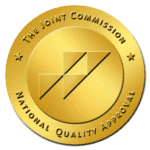
What is PTSD? Generally, PTSD is a psychiatric disorder that can occur in people who have experienced or witnessed a traumatic event, series of events, or set of circumstances. This can be emotionally or physically harmful or life-threatening to an individual, and it can have an impact on their mental, physical, social, and/or spiritual well-being. Natural disasters, serious accidents, terrorist acts, war/combat, rape/sexual assault, historical trauma, intimate partner violence, and bullying are all examples.
PTSD has been known by several names in the past, including “shell shock” during World War I and “combat fatigue” after World War II, but it does not only affect combat veterans. It can affect anyone, of any ethnicity, nationality, or culture, at any age. Every year, approximately 3.5 percent of adults in the United States suffer from PTSD. Its lifetime prevalence in adolescents ages 13–18 is 8%. PTSD affects women twice as much as men. Three ethnic groups are disproportionately affected and have higher rates of PTSD than non-Latino whites: US Latinos, African Americans, and Native Americans/Alaska Natives.
A traumatic event must be experienced in order for PTSD to be diagnosed. Directly experiencing an event, witnessing a traumatic event happen to others, or learning that a traumatic event happened to a close family member or friend are all examples of exposure. It can also happen as a result of repeated exposure to gruesome details of trauma, such as police officers who are exposed to details of child abuse cases.
Symptoms and Diagnosis
Symptoms of PTSD fall into the following four categories. Specific symptoms can vary in severity.
Intrusion: Intrusive thoughts such as repeated, involuntary memories; distressing dreams; or flashbacks of the traumatic event. Flashbacks may be so vivid that people feel they are reliving the traumatic experience or seeing it before their eyes.
Avoidance: Avoiding reminders of the traumatic event may include avoiding people, places, activities, objects and situations that may trigger distressing memories. People may try to avoid remembering or thinking about the traumatic event. They may resist talking about what happened or how they feel about it.
Alterations in cognition and mood: Inability to remember important aspects of the traumatic event, negative thoughts and feelings leading to ongoing and distorted beliefs about oneself or others (e.g., “I am bad,” “No one can be trusted”); distorted thoughts about the cause or consequences of the event leading to wrongly blaming self or other; ongoing fear, horror, anger, guilt or shame; much less interest in activities previously enjoyed; feeling detached or estranged from others; or being unable to experience positive emotions (a void of happiness or satisfaction).
Alterations in arousal and reactivity: Arousal and reactive symptoms may include being irritable and having angry outbursts; behaving recklessly or in a self-destructive way; being overly watchful of one’s surroundings in a suspecting way; being easily startled; or having problems concentrating or sleeping.
Many people who are exposed to a traumatic event experience symptoms similar to those described above in the days following the event. For a person to be diagnosed with PTSD, however, symptoms must last for more than a month and must cause significant distress or problems in the individual’s daily functioning. Many individuals develop symptoms within three months of the trauma, but symptoms may appear later and often persist for months and sometimes years. PTSD often occurs with other related conditions, such as depression, substance use, memory problems and other physical and mental health problems.
Related Conditions
Acute Stress Disorder
Acute stress disorder, like PTSD, develops in response to a traumatic event, and the symptoms are similar. The symptoms, however, appear between three days and one month after the event. Acute stress disorder patients may relive the trauma, experience flashbacks or nightmares, and feel numb or detached from themselves. These symptoms cause major distress and problems in their daily lives. Approximately half of people with acute stress disorder develop PTSD. Acute stress disorder has been diagnosed in 19%-50% of people who have been victims of interpersonal violence (such as rape, assault, or intimate partner violence).
Psychotherapy, including cognitive behavior therapy, can help control symptoms and keep them from worsening and progressing to PTSD. SSRI antidepressants, for example, can help alleviate symptoms.
H3: Adjustment Disorder
Adjustment disorder develops as a result of a stressful life event (or events). The emotional or behavioral symptoms that a person experiences as a result of the stressor are generally more severe or intense than would be reasonably expected for the type of event that occurred.
Feeling tense, sad, or hopeless; withdrawing from others; acting defiantly or impulsively; or physical manifestations such as tremors, palpitations, and headaches are all symptoms. The symptoms cause significant distress or difficulties functioning in important areas of a person’s life, such as at work, school, or in social interactions. Symptoms of adjustment disorders appear three months after a stressful event and last for no more than six months after the stressor or its consequences have passed.
The stressor can be a single event (for example, a romantic breakup) or a series of events that have a cumulative effect. Stressors can be recurring or ongoing (for example, a chronically painful illness that is causing increasing disability). A single person, an entire family, or a larger group or community (for example, a natural disaster) can all be affected by stressors.
An adjustment disorder is the primary diagnosis for 5% to 20% of people receiving outpatient mental health treatment. A recent study found that more than 15% of adults with cancer have adjustment disorders. It is typically treated with psychotherapy.
Disinhibited Social Engagement Disorder
Disinhibited social engagement disorder develops in children under the age of two who have experienced severe social neglect or deprivation. Similar to reactive attachment disorder, it can occur when children do not meet their basic emotional needs for comfort, stimulation, and affection, or when caregiver changes (such as frequent foster care changes) prevent them from forming stable attachments.
A child with disinhibited social engagement disorder engages in overly familiar or culturally inappropriate behavior with unfamiliar adults. For example, the child may be willing to leave with an unknown adult with little or no reservations. This disorder is frequently associated with developmental delays, including cognitive and language delays. The quality of caregiving has been shown to influence the course of this illness. Even with improvements in the caregiving environment, some children may experience symptoms that last into adolescence.
It is unknown how common disinhibited social engagement disorder is, but it is thought to be uncommon. The disorder does not develop in the majority of severely neglected children. Working with caregivers to ensure the child has an emotionally available attachment figure is the most important treatment modality.
Reactive Attachment Disorder
Children with reactive attachment disorder have experienced severe social neglect or deprivation during their first years of life. It can happen when children lack basic emotional needs like comfort, stimulation, and affection, or when caregivers change frequently (like in foster care), preventing them from forming stable attachments.
Reactive attachment disorder causes children to withdraw emotionally from their adult caregivers. They rarely seek comfort, support, or protection from caregivers, and they do not respond to comforting when they are distressed. They exhibit little positive emotion and may exhibit unexplained fear or sadness during routine interactions with caregivers. The issues appear before the age of five. Developmental delays, particularly cognitive and language delays, are frequently associated with the disorder.
Even in severely neglected children, reactive attachment disorder is uncommon. A therapist will work with a child and their family to strengthen the relationship between the child and their primary caregivers.
Treatment
It is critical to understand that not everyone who experiences trauma develops PTSD, and not everyone who develops PTSD requires psychiatric treatment. Some people’s PTSD symptoms fade or disappear over time. Others get better with the help of their support system (family, friends, or clergy). However, many people suffering from PTSD require professional help to recover from the intense and disabling psychological distress. It is critical to remember that trauma can cause severe distress. It is not the individual’s fault that they are distressed, and PTSD is treatable. The sooner a person seeks treatment, the better his or her chances of recovery.
Psychiatrists and other mental health professionals help people recover from PTSD using a variety of effective (research-proven) methods. For PTSD, both talk therapy (psychotherapy) and medication are effective, evidence-based treatments.
At the Mental Health Center of San Diego, we provide treatment for those who have gone through traumatizing events and can’t seem to get their lives back. We offer a specially tailored treatment center for psychological trauma to help with the physical, emotional, and mental symptoms you’re experiencing.


















